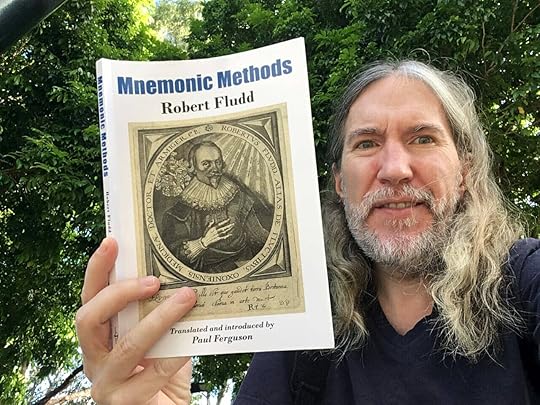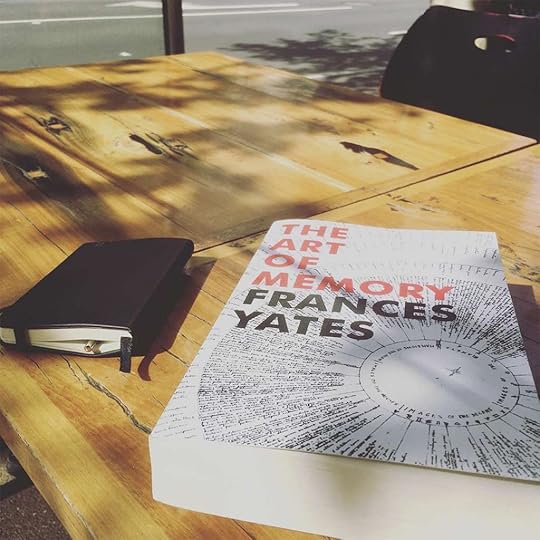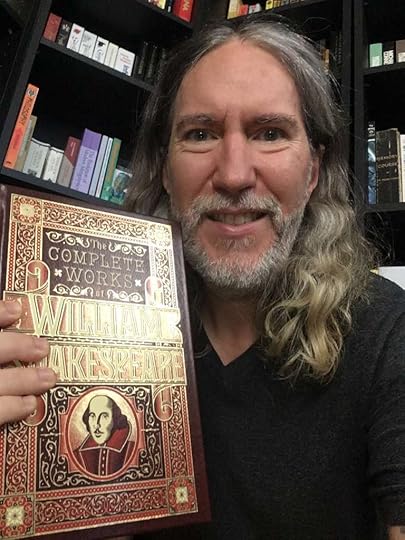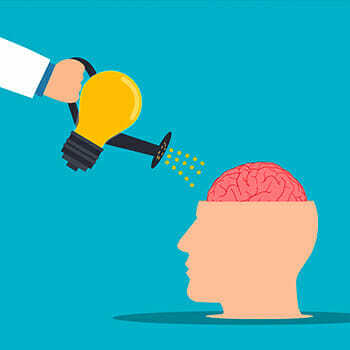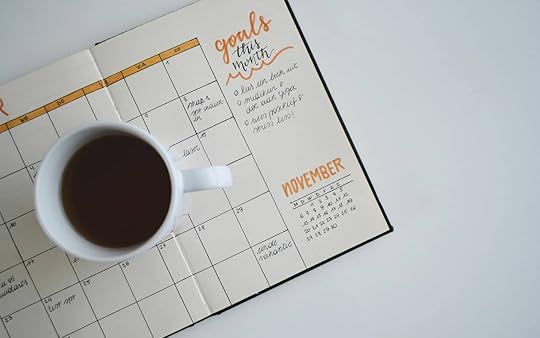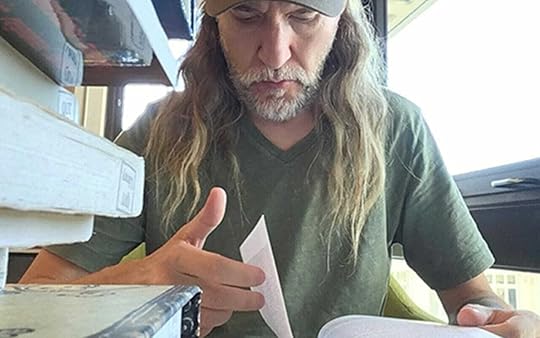Anthony Metivier's Blog, page 4
November 3, 2023
The Importance of Philosophy: 7 Life-Changing Reasons
 Why study philosophy?
Why study philosophy?
After all, aren’t philosophers just a bunch of people who use big words in unreadable books?
I mean, think about it…
Half the time it seems like they’re preaching to us about how we should act in the world while they bumble through their personal lives.
Although that assumption can prove true more often than I’d like, the importance of philosophy is not owned by philosophers.
It’s also not necessarily the “love of wisdom” as people often translate it from the ancient Greek, φιλοσοφία.
As Emmanuel Levinas put it, we might do better if we think about philosophy as “the wisdom of love.”
I find Levinas’ formulation useful because it reveals how better thinking can help us discover what’s truly important in life.
And when we focus on allowing the love in wisdom to guide us, we will almost certainly respond to our fellow citizens from an elevated position.
Sure, it might not involve “love” as such in a personal way, but it will certainly involve much higher levels of care.
https://www.youtube.com/watch?v=oU2Z9...
Why is Philosophy Important? 7 Life-Changing ReasonsIn What is Philosophy? Deleuze and Guattari suggest that opinion is chaos.
When you look at social media sites like Twitter, you almost feel like they must have had the ability to peer into the future when they wrote this book back in 1991.
But if there’s one reason above all that makes philosophy important, it’s the reduction of random, chaotic influence. The more you develop yourself philosophically, the more you can avoid being yanked around by the chaos of opinion.
With this point as our governing theme, let’s explore a few more reasons philosophy is so important.
Systematic AnalysisAs different views and opinions flood the news and social media, instead of taking them at face value, you can use philosophical tools to pick them apart.
How? There are at least 9 critical thinking strategies you can use. The more of these tools you have in your mental toolbox, the more you can overcome barriers that impede your thinking.
By practicing this kind of analysis, you’ll also be better at perceiving systems as such. They are everywhere and being able to spot them has a lot to do with our next point.

Thinking philsophically helps you perceive and then remove the barriers that hinder your life.
Know When You’re Being InfluencedUnfortunately, we’re all gullible from time to time.
But the more we analyze the world around us, the more we can steep ourselves in positive influences while draining out the bad.
And it’s important to note that even useful sources can sometimes deliver unhelpful ideas. We need to be able to spot influence as such. That way we can properly evaluate it.
These critical thinking books will help you develop the ability to seek top quality influences in your life and weed out the poor performers.
Interpret & Respond OptimallyEvents in the world create all kinds of emotional responses.
But when you’re well-versed in philosophy, you’re equipped with a kind of “science of emotions.” You’re better able to perceive when you’re being irrational and use abstract thinking to pull away from your gut response.
Now, you might be thinking, “Hang on, people keep telling me that I need to listen to my gut response, not ignore it.”
True, there are some cases where you want to listen to your gut. Gavin de Becker’s The Gift of Fear has been personally helpful on that front.

Following your intuition is great – but only in certain contexts. Thinking philosophically can help make sure you’re using the right tools at the right times.
But in many areas of life, listening to your gut just doesn’t stand to reason. In fact, in Decisive, Dan and Chip Heath share research that strongly demonstrates going with your instincts is all-too-often one of the worst things you can do. Their W.R.A.P. technique is a fantastic little philosophical tool that helps you avoid irrational decisions so you can respond to life optimally.
Evaluate IdeasA large part of thinking rationally involves knowing the value of various ideas.
For example, take two people, John and Cindy. They both buy the same book.
John says, “It was $20 dollars, but I only got one idea out of it. I went on to buy five other books and ultimately never did anything with that original idea.”
Cindy says, “I only got one idea out of the book, but it was only $20 and even though it was just one idea, I managed to put that idea to work in my business. It increased profitability by thousands of dollars.”
Albeit simplistic, this example shows that Cindy evaluates ideas differently than John. Keeping our principle of philosophy as a form of active thinking in mind, she gives the idea life by using it.
She also makes it valuable by putting it into action.
As you explore philosophy, you’ll find that you can better evaluate many ideas. You’ll also reduce the kind of judgmentalism that causes you to dismiss ideas that could be extraordinarily valuable if you put them into action.
Understand the LawMany people do not realize that the laws governing them were arrived at based on philosophical thinking.
The more you learn about philosophy, the more you’ll be able to see how philosophical ideas shape the rules of your society. And this means you’ll be able to participate in how they are crafted in a more integral way.
You can also start to see how governments lead heavily on mimetic behavior, which means shaping your desire based on the desires you see in others. This process is the basis of all propaganda, but it starts with philosophical ideas we can see in some of the earliest philosophers.

For example, Confucius talks a lot about imitating not just what the ancients did, but also to desire what they desired. Likewise, Mozi advised kings to promote certain kinds of behaviors so that others in society would imitate them. See Readings in Classical Chinese Philosophy for these references.
Spot and Resolve ContradictionsThe human species is incredibly complex.
And our success on the planet is difficult to understand because we contradict ourselves all the time.
Yet, thanks to the mental tools we’ve developed using philosophy, we’ve managed to thrive.
In many ways, the technological projects we’re engaged in are trying to resolve human contradictions. From memory implants to AI, it often feels like the human species is under attack.
By the same token, we’ve always had this relationship with our technologies. Plato worried about how our technology might be able to copy itself and run rampant. Mary Shelly imagined Frankenstein’s monster taking vengeance on his creator for neglect and there are many other fantasies that philosophize about our inadequate human behaviors. They ask questions like:
Although we clearly no better than to damage ourselves and our entire planet, why don’t we do better?
Although we still rarely find consensus on the answers our philosophizing helps us produce, we’re lucky to have the thinking tools more available than ever before. We can consult all the major philosophers, often for free, just by searching Project Gutenberg and Youtube.

In Ecce Homo, Nietzsche tells us that Heraclitus was essentially his hero. During what appears to have been a period of great discomfort for the philosopher, Nietzsche seems to have taken great solace in this connection.
As you read philosophy, you’ll encounter multiple styles of thinking and learn more about yourself as you’re drawn to some and have a harder time relating to others.
This does not mean that you reject those who don’t resonate with you as invalid. It just helps you gain perspective on who you are and gives you a basis for reflecting on how and why you came to be that way.
These perspectives will sometimes challenge and even destabilize your self-perception. But as we know from the example of Nietzsche, finding points of comparison can be tremendously stabilizing too.
All the more reason to keep reading a wide variety of philosophers from multiple cultures and time periods. The ability to compare multiple perspectives is personally rewarding and provides great brain exercise.
Why Study Philosophy?I think the number one reason to study philosophy is that we all practice active thinking each and every day to solve our problems.

Why wouldn’t we want to get better at it?
Philosophy is unique in that it is the one field of human endeavor that still makes sense to read historically.
Here’s what I mean:
It might be a novelty to read the earliest books on chemistry. But it won’t help you use contemporary chemistry very much, if at all.
But when it comes to philosophy, it’s possible to gain tremendous value from going as deep into history as possible. We learn as much from the oldest philosophical books as we do from the new ones.
Indeed, in many cases, we cannot understand many books of philosophy without knowing at least a little about the earliest philosophers.
Sure, you can read Plato and get a great deal out of it. But you get even more out of it if you’ve also read and put some thought into the Pre-Socratics to whom Plato was responding.
And this feature of philosophy means that you stand to receive endless rewards.
The study of philosophy is deeply pleasurable. And all the more so when you can remember the philosophy that you read.
To help you out with that, please register for my FREE Memory Improvement Course:
This exclusive program teaches you the Memory Palace technique with key exercises that help you excel in using it.
That way, when you come across the names of philosophers in articles like this one, you’ll be able to remember them. You’ll also be able to remember the names of their books and key concepts too.
As a result, you’ll be able to put their ideas into action. Again, action is essential. Without it, you cannot craft your own personal philosophy. You’ll struggle to increase your personal delight with the quality of your mind each and every day.
So what do you say?
Do you agree that philosophy is one of the most important mental activities in the world?
And are you ready to deepen your relationship with it?
I know I sure am. As a practice with no end in sight.
October 30, 2023
Beyond Mnemonics: Exploring the Road to Enlightenment With 3x USA Memory Champ John Graham
 Believe it or not, using mnemonics can make you feel so great, it’s almost like your head is going to explode.
Believe it or not, using mnemonics can make you feel so great, it’s almost like your head is going to explode.
On the one hand, it sounds obvious.
When you can remember more, boosts in mood completely make sense.
But what about feelings that are even more intense.
Such as experiencing an “awakening”?
Or even reaching a state of enlightenment?
Not only do I believe it’s possible.
I’ve read many accounts of such experiences in the memory improvement literature.
I’ve even had mystical experiences myself.
That’s why I jumped at the chance to talk with John Graham about it when he asked me about strange occurrences I’ve written and talked about a lot over the past few years.
The only question is…
What do we believe about our experiences?
https://www.youtube.com/watch?v=ZcObj...
That’s what John Graham and I discuss in this episode of the Magnetic Memory Method Podcast.
Who Is John Graham?John is an incredibly accomplished mnemonist. In addition to being a memory athlete and memory expert, he’s extremely knowledgeable about focus and concentration – especially for business professionals who struggle with anxiety.
John also have some next level memory training concepts that explain why he performs so well when it comes to winning at memory events like the USA Memory Championship.
Why Talk About Enlightenment?The simple answer is…
I don’t know.
Free will – and its absence – is one of the key ideas that come up around topics of awakening and enlightenment.
In fact, abandoning the sense of self is a hallmark of how many people talk about these experiences.
We’ve seen it in the memory tradition from people like Ramon Llull and Giordano Bruno. Indeed, in On the Shadows of the Ideas, Bruno says he has light bursting out of his eyes thanks to his experiences with using memory techniques.
You also find similar themes in St. Augustine’s work on memory. It’s a thread in Yates’ infamous Art of Memory. And in a very subtle way, the concept shows its face in Moonwalking with Einstein when Joshua Foer meets Tony Buzan and learns about becoming a “Warrior of the Mind.”
I’m grateful to John for holding the conversation. Thinking critically through experiences like these is important.
What do you think about memory training leading to states of enlightenment?
Have you had similar experiences?
October 25, 2023
Why Is Critical Thinking Important? 5 Compelling Reasons
 If you’re wondering why critical thinking is important, you might be tired of the same old explanations.
If you’re wondering why critical thinking is important, you might be tired of the same old explanations.
The economy needs smart people…
Critical thinkers are more creative…
It makes you sound smarter…
Well, yes. All of those things are true.
But most posts only scratch the surface.
On this page, we’re going to go much deeper into the topic.
And we’re going to use critical thinking to do it.
Ready?
Let’s go!
https://www.youtube.com/watch?v=TS7BZ...
What Is Critical Thinking?Technically speaking, critical thinking boils down to two things:
Objective analysisAccurate judgmentOnce you have those two things in place, you can make better decisions. Predictably.
But a number of skills have to be in place before you can rely on this ability. You need:
Care and concern for the truthAnalytical thinking skillsInterpretationAbility to judge the credibility of sourcesAbility to ask questions that clarify the issue at handInferenceOpen-mindednessSelf-correction and the desire to improveAbility to defend your decisionsHistorically, we can look to thinkers like Confucius and Plato. They looked not only at how individuals think, but tried to balance each self against entire societies.

A true critical thinker is not trapped in his or her own mind, after all. They’re able to see the big picture and realize that individual minds are not merely influenced by other minds. They are constructed by them.
According to Jonathan Haber in Critical Thinking, Aristotle is the first great critical thinker because he categorized and organized his thoughts about the world in the context of what others thought.
In this vein, Aristotle worked on biology, politics, drama, logic, rhetoric and other thought processes. These categories still serve as what Haber calls “the building blocks of education.”
Why Is Critical Thinking Important?So if you want to know why critical thinking is important, it really boils down to exactly Haber’s point:
Because we have learned to think critically, we have those building blocks. We’re able to educate ourselves and others so that societies around the world can experience progress.

Another way to look at it is like this:
When humans weren’t capable of thinking very well, we suffered a lot more. But as our thinking abilities have grown, our suffering has decreased. Stephen Pinker is one of many thinkers who have demonstrated the validity of this point in books like Enlightenment Now.
But we’re still just scratching the surface. Let’s look at some more reasons:
One: Understanding Probability & LikelihoodA lot of human history has involved guessing. People literally had no way of knowing what the weather would be like tomorrow, let alone making predictions about the stock market that could potentially make them rich.
In today’s world, we learn to think probabilistically from a very young age. It’s a common part of mental strength that helps us avoid leading ourselves into traps.
I’m talking about traps like golden handcuffs, or its alternative, slave’s luck. These are contemporary terms for the old phrase “selling your soul to the devil.”
Because more and more people use critical thinking to see how employers trap them with false incentives and can use research to avoid miserable jobs, the world gets better.
The more people think through the probabilities of future happiness, the better everything gets for everyone.
And it’s not just about the future. Reflective thinking helps you tap into your past for important context.

Context is important for our next point:
Two: Comparison and ContrastWould you agree that eating a ripe orange is better than eating a rotten one?
If you just said, “yes,” that’s because you know how to compare and contrast two different things.
Critical thinking relies on this all the time for much more consequential issues in life. But this simple example demonstrates the importance of distinguishing between things.
Three: Defining and Using DefinitionsIn Critical Thinking, Robert Ennis offered the FRISCO model to help define critical thinking:
Focus: identify the focus or central concern Reason: identify and judge the acceptability of the reasons Inference: judge the quality of the inference, assuming the reasons to be acceptable Situation: pay close attention to the situation Clarity: check to be sure that the language is clear Overview: step back and look at it everything as a whole

There’s a reason that he starts this problem solving model with identifying the central issue. That’s because we need to be able to define things in order to make effective decisions.
And once we can define things, we need to be able to compare and contrast various definitions.
Four: Putting Solutions Into ActionHave you heard of “analysis paralysis”?
Too many people fall into it, but it’s not the fault of critical thinking. It’s coming from a lack of having effective critical thinking strategies.
This criticism is valid because true critical thinkers must take action once they’ve decided what to do.
If you don’t take action, you rob yourself of data. You cannot analyse results you haven’t produced, which prevents you from thinking at all.
Everyone has the cognitive capacity to take action once they’ve made a decision. So if you’re getting stuck, try these critical thinking exercises.
Five: MetacognitionRemember when I said at the beginning we were going to use critical thinking itself in this post?
We’re going to use it now because I was tempted to raise this point and define it very simply as our ability to think about thinking.

According to Julianna Benson in Metacognition, we have to go beyond “cognition about cognition” as the definition of this term.
Metacognition is definitely that, but it also involves:
Perceiving that thinking is taking placeMonitoring the thinking process without losing perceptionThis is why critical thinking skills are important. We can’t rely on simplicity to get ahead in life. We need to dig deeper into complexity.
Nothing new about that.
For example, critical thinking practices blended with meditation have been around for a long time. Advaita Vedanta, Chan and Zen use various means of helping you perceive your thoughts and maintain the ability to monitor them without interruption.
Developing these abilities lead to better pattern recognition, which can help you learn a language faster.
It can also help you avoid the “groupthink” issues researchers have proven come from poor learning techniques like rote learning.
One simple technique can use to start practicing metacognition today is covered in Gary Weber’s Evolving Beyond Thought. I discussed its impact on my own life at a TEDx event:
https://www.youtube.com/watch?v=kvtYj...
When You’re A Critical Thinker…We’ve covered a lot today. And we’re not even scratching the surface of what’s available in these critical thinking books and examples. And that’s not to mention the value of learning how to use abstract thinking.
Nonetheless, we’re off to a strong start. I’ve shown you how to remember critical thinking principles, and memorizing has been scientifically shown to help you reason at a high level even during your senior years.
But you want to know what I feel is the most important and most beneficial reason we all need to be critical thinkers?
It’s this:
When you’re a critical thinker, you’re never alone.
That’s right.
Loneliness disappears completely because you have joined a group of people who care about the truth.
Not only that.
This group of exclusive individuals is also always preparing to take action based on the truth.
That’s fantastic company indeed.
But if you’re still struggling to develop critical thinking skills, it might be a memory issue.
To fix that, please consider grabbing my free memory improvement kit. It will help you remember everything we discussed today, and become a person of action.
At the end of the day, action, and taking the right actions consistently is what success is all about.
October 19, 2023
The Zettelkasten Method Unleashed: Enjoy Better Note-Taking Fast
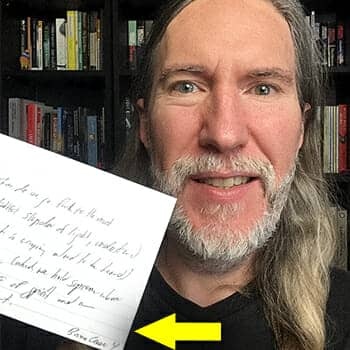 I’ve been using a Zettelkasten system since 2000 when I learned it in grad school.
I’ve been using a Zettelkasten system since 2000 when I learned it in grad school.
However, I’ve noticed that many people make the approach way too complicated!
That’s a shame because the Zettelkasten method is about maximizing flexibility and increasing comprehension and recall.
So on this page, I’ll share with you the interesting history of the Zettelkasten note taking approach.
And I’ll share the incredibly simplified version I’ve used ever since it helped me earn my PhD. It’s helped me learn languages, write books and give talks from the top of my head.
Better:
I’ll also show you how you can combine the Zettelkasten approach with the Memory Palace technique.
That way, you’ll enjoy much more high-powered results even faster.
Ready?
Let’s dive in!
https://www.youtube.com/watch?v=OrN0k...
What Is the Zettelkasten Note-Taking Method?Directly described, “Zettel” means note and “kasten” is the plural for box in German. So a Zettelkasten method is a means of gathering small note together in boxes. This is done not only for organizational purposes, but also to optimize a spaced repetition process that helps form memories faster.
There are many benefits of using this approach:
Flexibility and Interconnectivity: Zettelkasten notes are not isolated entities. Instead, you’re actively interacting and interconnecting the building blocks of knowledge. You are literally building a web-like network of ideas in your mind. As a result, you’re much more likely to experience holistic thinking and enjoy new insights.
Enhanced Retrieval: Zettelkasten enables efficient retrieval of information. With interconnected notes and a well-organized structure, you can easily locate specific notes, follow trains of thought, and access related concepts. This promotes effective learning and idea synthesis.
Creative Sparks: The Zettelkasten method nurtures creativity by encouraging the emergence of unexpected connections and patterns. As you interlink different ideas, innovative insights can arise, leading to novel perspectives and unique solutions to problems.
Knowledge Expansion: By actively engaging with your notes and continually adding to them, the Zettelkasten method promotes deeper understanding and comprehension while reading. It encourages active learning, visualization while reading, reflection, and the expansion of knowledge over time.
Resilience against Information Overload: The Zettelkasten method helps combat information overload. It provides a structured framework for capturing and processing information, helping you filter, prioritize, and make sense of vast amounts of knowledge.
The History of the ZettelkastenUsually, people trace the Zettelkasten method back to the early 20th century, particularly to the sociologist and information scientist Niklas Luhmann. Luhmann sought a system that could help him manage and connect a vast amount of knowledge and accomodate random ideas.
However, it’s a misconception that Luhmann came up with the idea out of nowhere. To take just one source, Luhmann was inspired by the note taking method used by the renowned polymath and philosopher, Gottfried Wilhelm Leibniz. Stephen Wolfram has shared some images he took of Leibniz’s notes:

A Pre-Zettelkasten Example from the philosopher and mathematician Leibniz.
Other historical influences on Luhmann’s adaptation include Vincent Placcius‘s De arte excerpendi (the art of excerpting).
Placcius organized the notes he took onto slips for distribution in alphabetized slots in a series of wooden boxes. He was apparently legendary for having a prodigious memory.
And no doubt because using this simple note taking approach lends itself to neuroplastic changes to the brain so that it more closely resembles and operates like a dictionary or encyclopedia.
Luhmann’s Contribution to the Zettelkasten MethodLuhmann’s Zettelkasten consisted of index cards or slips of paper, each representing a distinct idea or concept. He meticulously organized and linked these notes using a unique numbering system and cross-references. This structure allowed Luhmann to explore complex topics, make connections, and more effortlessly navigate his intellectual landscape.
Over the years, Luhmann refined and expanded his Zettelkasten, ultimately creating a colossal knowledge repository that housed over 90,000 notes. The Zettelkasten became an integral part of his research, which was considered prolific. Apparently, this approach lead him to make groundbreaking contributions in sociology, systems theory, and communication studies.
The Mind-Blowing Efficiency of the Zettelkasten StructureNow, rather describing how others have used this approach, let me share the simplified style I’ve used for two decades. I’ve cut out so much unnecessary meta-note taking and kept only the core idea. This has helped me use the Zettelkasten method faster and combine the approach with the Memory Palace technique much more directly.
But first, what are the meta-note taking structures I’ve cut out?
It’s little markers that identify what kind of note is on the card. For example, making a meta-note that says:
QuoteIdeaLinkEtc.As you’ll see in the Zettelkasten examples I’ll share, quotes have quotation marks around them, so there’s no need to write out the word “quote.” If I want to note that one idea links to another, I’ll simple put “re” on the card, but not make that card special in any way. I’ve not found it useful to do so.
Alright, now that you know more about what I don’t do, let’s break down the exact steps I follow.
How to Use the Zettelkasten Process to Take & Memorize Your NotesAs we go through these steps, please note that there is always a certain amount of flexibility in my personal process. I’m giving you the way it normally plays out, but sometimes there are variations. For example, I might approach extracting notes from a podcast slightly differently than I would from a book.
With that in mind, everything begins with the most important step of all.
Step One: Make Sure The Source Is Worth Taking Notes FromA lot of people struggle to figure out the main points in the books they read. And no doubt. A lot of books are poorly written, which is one of the main reason it can be challenging to read as fast as you might like.
Now, there’s no perfect way to make sure a book is worth making notes from. But as a general process, I try to hit these steps in this order:
Check out book reviews from qualified scholarsRead reviews from the general publicRead the conclusion of the book first to determine the importance the author gives to their own topicRead the most interesting or obviously important chapters firstThis simple process saves a ton of time because often the conclusion of a book reveals that the author did not discover anything truly epic.
Step Two: Have Your Cards & Other Tools ReadyAs I share in my detailed tutorial on how to memorize a textbook, when I read a book, I have a number in mind.
There is no way I’m going to try and extract every single last detail from a book. Why would I? That would involve copying the entire book onto cards.
Instead, I decide that I’m generally going to extract 3-5 big points from each chapter.
And to make sure I’m ready to do that, I bring enough index cards or blank flashcards with me to the library.
Also, I bring a box of sandwich bags.
Weird, right?
Well, when I lived in North America, I used to use elastic bands to gather my cards together per book.
But now that I live in Australia, I’ve found that elastic bands melt and fuse with the cards. Using plastic bags helps keep the cards nice and clean and prevents the rubber from melting into the ink and making my handwriting hard to read.

All the Zettelkasten cards related to this book are behind an initial card with the book author and title information. This bag then goes into a shoebox of alphabetically organized cards gathered by book.
Step Three: Follow A (Mostly) Uniform Note Taking ProcessAlmost without variation, I start my first card for a book with the information from the colophon page: author name, book title, date of publication and publisher.
Although this information may or may not be “mission critical” to know in the future, it’s all part of knowledge and well worth recording and memorizing. Plus, facts like the publisher location and the publication date can help you rapidly assign mnemonic imagery.
For example, by noting that a book is published in 1999, I can think about Jean Chretien as the Canadian Prime Minister, and Bill Clinton as the US President. When I come across the first thing I want to memorize, I automatically have some associations to work with.
On the subsequent cards, I simply jot out quotes and big ideas. If it’s a quote, I put the quote in quotation marks. If it’s an idea or an observation, I don’t.
The bottom right corner of each card always has the book title and the page number from which I’ve drawn the quote or made the observation.
That’s it. Clear, crisp, simple and uniform.
The alternative is that if I’m taking notes from a podcast or video, there are no pages. In these cases, I’ll write out the time the point was made.

This Zettelkasten example reflects a quote drawn from a podcast. Note the time stamp near the bottom right. The speaker and name of the podcast is below the time stamp, a process I follow uniformly.
Step Four: Organize the Cards Alphabetically by SourceSome people like to get fancy. They buy or make wooden cabinets for their cards.
Apart from not having elastic bands melt into my cards, I’m not that fussy.
Instead, I organize my cards into shoeboxes and alphabetize them by title. So if my notes for a book called Nothing are in a plastic baggie, that will appear ahead of my notes from a book called One.
Now, you could easily organize your cards by author last name. I’ve done that in the past, but for some reason I now prefer to do it by title.
Alternatively, if I’m reading at home and the set of cards is very small, I will either:
Store the cards in the book itselfNot use cards at all, but write my own index on the inside coverEither way, everything is accessible in the order of the information in the source, either by page number or by time stamp.
And it is very helpful that these cards are storable in a tidy manner. I don’t like to have random cards all over the place, except when I’m using them as part of a memorization or book writing project.
Step Five: Cull and Memorize with a Memory PalaceLet’s say that you’ve now got a bunch of cards that you’ve placed in one of more Zettelkasten. You know that you want to memorize the big details.
Go through the cards and separate out the ideas that seem most worth memorizing.
Then, start to place them in a Memory Palace. I often memorize ten ideas per Memory Palace to keep things direct, simple and as fast as possible. But sometimes I’ll use larger Memory Palaces.
The great thing about having the cards marked by title and page order is that when I’m done, all those ideas now go back with the individual bag of cards to which they belong.
Step Six: Revisit Your Zettelkasten PeriodicallyAs you go about your learning life, you’ll keep adding more cards and memorizing the key points.
But it’s also useful to revisit the cards you’ve collected in the past from time to time.
If you prefer, you can use a dedicated system called the Leitner Box system. I’ve also shared how I use the Leitner system in detail.

The Leitner spaced repetition system helps you manage your exposure by placing accurate and inaccurate flashcards in boxes.
Basically, this approach applies the forgetting curve principle to the Zettelkasten system. Anki is generally based on this algorithm as well.
Personally, I don’t use anything as regimented as this, and that’s largely for two reasons:
I use Memory Palaces and this normally allows me to be more casual about when I revisit my ZettelkastenI’m always using active reading tactics, activities that create a natural form of spaced repetitionI use Zettelkasten in combination with how I complete courses rapidlyI write frequently about the topics I studyWhen it comes to writing, this topic leads me to share with you yet another powerful learning strategy.
Step Seven: Summarize by Writing and SpeakingAlthough it’s fantastic to have many big ideas distributed across your easy-to-find Zettelkasten, true synthesis comes when you put the information into your own words.
You don’t have to go to elaborate lengths like building a blog.
Just 250-500 words per book will do. This simple process will stretch your recall of what you read and understood. And it will reveal any gaps in your understanding where you might like to fill in the blanks.
In addition to writing summaries, having ample conversations will also help you engage in the active recall that forms memory and understanding faster. You can also practice memorizing what people say in response while conversing them for extra results.
The Most Powerful Zettelkasten Example On The PlanetOn this page, I’ve shared my process for using this powerful learning technique.
But do you know what will make for the best Zettelkasten example you’ll ever find?
The cards you create for yourself.
My simplified method may be too simple for you.
If so, there’s lots of information out there about how to make it more complex.
Or, you might want to simplify it even further.
One way or another, taking action is the ultimate way to reveal just how powerful this technique will be for you.
And if you’re interested in going deeper with this method when it comes to using a Memory Palace Network, grab this free course now:
It will give you the full rundown on how to set up properly formed Memory Palaces so you can connect your Zettelkasten cards to them quickly, easily and efficiently.
So what do you say?
Are you ready to explore note taking in a completely new way?
Enjoy the journey and please let me know how it goes!
October 11, 2023
The Art of Memory, Frances Yates & The Rise of Modern Mnemonics
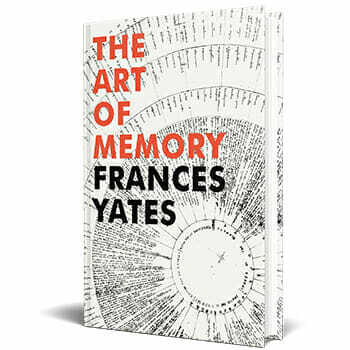 The Art of Memory is one of the most successful memory improvement books of all time.
The Art of Memory is one of the most successful memory improvement books of all time.
Ironic, given that its author says she never tried to use the memory techniques she discussed in such detail.
Frances A. Yates made a mark nonetheless.
She was a meticulous researcher and The Art of Memory is not her only book to touch on the world of mnemonics.
Are you interested in the art of memory at large, Yates’ contribution to the tradition of using mnemonics through her famous book and some of the best strategies she uncovered?
If so, let’s dig in and explore what Yates discovered about the method of loci. As we go, we’ll look at some of the historical figures who used the techniques to learn faster and remember more too.
https://youtu.be/TG5Fdilr9YI?si=1b9i8...
The Woman Behind The Art of Memory:Who Was Frances A. Yates?
According to Marjorie Jones in Frances Yates and the Hermetic Tradition, Frances Yates was one of the most important intellectuals in postwar England.
As Jones points out, Yates is also significant for women’s history. We tend to focus on scholars of memory like Aristotle, Ramon Llull, Giordano Bruno and Robert Fludd. But beyond Lynne Kelly, Mary Carruthers and memory athletes who share their mnemonics like Katie Kermode, there don’t seem to be many women in the conversation.
In fact, many people express surprise when I use “she” and “her” to discuss Yates. Many people tend to assume she’s a man – an impression perpetuated by the fact that her picture is not included with any of her books that I’ve seen.
Yates led a scholarly life, and Jones gives some indication that Yates may have treated one of her main topics, the memory master Giordano Bruno as a kind of symbolic father. But Yates died in 1981 before completing a biography she’d started and called the “B Book.”
It would be lovely to know more about Yates’ life, especially the fact that she didn’t use memory techniques. Jones subtlety casts some doubt on this claim Yates makes in The Art of Memory. By many reports, her memory was actually quite good.
That could be a result of context dependent memory, however, not Yates’ understanding of the ancient memory techniques she wrote about in such depth. Authors tend to spend a lot of time preparing and editing drafts, so it would not be surprising for her to have better memory than others for topics relating to memory and intellectual history at large.
The Primary Principles of The Art of MemoryAs Yates discusses in The Art of Memory, her primary goal is to better understand Giordano Bruno. She wrote about him at length in another book, and in a work about Llull. Bruno also comes up in some of her work on Fludd.
Contextualising Bruno’s historical moment is fantastic. To do so, Yates takes us all the way back to the ancient world.
Many interesting names come up, and the core mnemonic strategies that go with them are:
The Method of Loci, which is associated with Simonides of CeosThe use of memory techniques to give speeches as discussed in Rhetorica ad HerenniumMemory wheels, thought to be originated by Ramon LlullGuilio Camillo’s “Memory Theatre”Rober Fludd’s “Theatre of the World”Giordano Bruno’s alphabetical method for rapidly developing mnemonic imagesYates is particularly interested in how Bruno’s mnemonic strategies connect with his cosmological ideas. Not everyone agrees with Yates’ interpretation. For one thing, there have been new discoveries since Yates stopped writing about memory.
https://www.youtube.com/watch?v=nNrJl...
Dilwyn Knox suggests that Yates’ interpretation of Bruno as a hermeticist is forced, and I agree. But as John Michael Greer has suggested, everyone who works on Bruno is bound to invent their own version.
All of Yates’ discussion of memory techniques becomes even more complicated when we add in her claim that she never used the memory techniques under discussion.
Ultimately, I don’t know, but some of the ways she discussed mnemonics does suggest she didn’t understand them through experience.
7 Memory Techniques (Mnemotechnics) From the Art of Memory
In addition the memory techniques listed above, The Art of Memory discusses or at least mentions:
The Memory PalaceNumber systems we now call the Major System or Dominic SystemMemory wheelsJourney methodPegword methodSpaced repetitionMeditation on topics, or what we might now call reflective thinkingYates didn’t live to see some of the Aboriginal memory techniques we now know about from people like Tyson Yunkaporta and Lynne Kelly’s Memory Craft.
But that’s okay. Yates finished writing The Art of Memory in 1965 after all. And we probably wouldn’t have the work of countless others without her inspiration.
The Art of Memory: Has It Stood the Test of Time?It’s difficult to say. Generally, I’m a fan of memory improvement books. And generally, reading makes you smarter.
But is it in my personal top five?
Frankly, no. Even though I’ve taken dozens of notes on it.
If you want to learn about the history of memory techniques, then Yates’ writing is an absolute must.
But if you want to learn how to improve your memory, then you might walk away confused.
For best results, you’ll also want to read some of the primary texts Yates refers to throughout The Art of Memory. Some of these are easy to find online. For others, you can find them in their own volumes or in Carruthers’ The Medieval Craft of Memory.
For a more direct path to memory mastery in contemporary terms, many people like Harry Lorayne, Tony Buzan and books like Moonwalking with Einstein.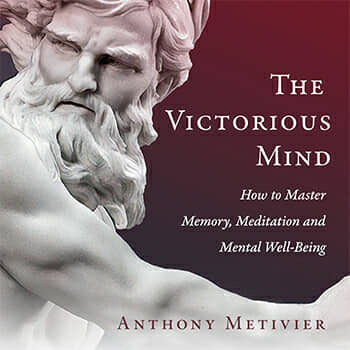
And of course, I’m honored if you read my book, The Victorious Mind. I probably never would have written it without having read Yates.
Nor would I have written my own book about Giordano Bruno and his “infinite Memory Palace technique.”
At the end of the day, I agree with Jones that Yates was a tremendous scholar.
Although her takes on Bruno are a bit hard to swallow after having read a lot of Bruno myself, Yates’ overall scholarship about memory is profound.
It’s just not a direct path to learning how to use the techniques, even if will inform you about the history of who used them.
If you’d like the fastest path to mastering the most important memory techniques quickly, please grab my Free Memory Improvement Course now:
You’ll discover how to do what Yates did not:
Use the techniques yourself.
But something even more profound:
Use the art of memory as an art, to be sure.
But also as a craft, a science and a martial art of the mind.
And that’s important, because another thing Yates glosses over in The Art of Memory is the role of critical thinking.
Ultimately, that’s what the art of memory at large is really all about. Yes, you need to understand the composition of images as Bruno discussed mnemonic imagery.
But Bruno, Llull and contemporary teachers of memory like myself urge you to take the art of memory into the realm of thinking better thoughts.
The true art of memory is about using your memory to make better decisions and solve problems quickly. To solve them accurately. And to solve them with wisdom each and every step of the way.
October 10, 2023
How to Write Learning Goals That Work For Mastering Any Topic
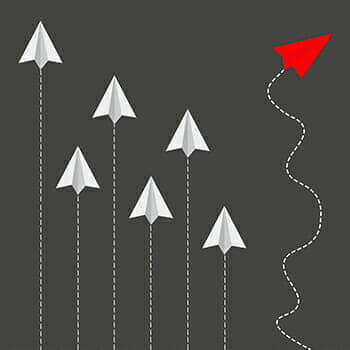 All successful learners set learning goals.
All successful learners set learning goals.
Even if the exact path isn’t clear and there might be some wiggly lines involved, this truth matters above all:
You can’t expect success from self-directed study programs without at least forming some kind of destination.
And the truth is, having a clear destination in mind, isn’t always the best policy. Sometimes you have allow for a little wiggle room. If not a lot.
As someone who has been both student and professor, I can help you from both sides of the coin.
I’ve passed multiple exams based on many courses. But I’ve also gone on to learn on my own to learn new skills and research and write multiple books.
To help you out based on solid scientific research and experienced earned from preparing many outlines for my memory goals, let me give you some examples you can model.
And let me do even better than that:
In this post, I’ll show you how to create a learning goal that actually gets you the outcome you want.
Whether that’s learning a language, mastering a musical instrument or becoming an expert in a difficult topic, this is the blog post for you.
How cool is that?
Very cool, as you’re about to see. So let’s dive in.
https://www.youtube.com/watch?v=dPfW-...
What Are Learning Goals?Learning goals are like destinations on a map.
You have never been to the location, but you know that it exists.
The reason you know it exists is either because others have been there, or others have tried to reach the destination.
And this is an important point:
A lot of people think that learning goals must be achievable.
Frankly, I think we have every reason to believe this simply is not true.
For example, must it be achievable that we do all we can to learn about space travel?
We don’t know if it’s actually possible or not, but we’re doing it.
To take a more down-to-earth example, I had no idea whether or not I would be able to understand many topics or learn some of the languages I’ve tackled.
And right now, as part of my current learning cycle, I’m studying physics. It’s really hard to understand, but I take heart from a quote I found early on from one of the most renowned physicists, Richard Feynman:
It is my task to convince you not to turn away [from physics] because you don’t understand it. You see, my students don’t understand it either. That’s because I don’t understand it. Nobody does.
Ultimately, this means that the exact definition of learning goals is exactly what I’ve suggested: It’s a destination. And all you need is an inkling that the destination exists just as Richard Feynman and millions of other people make learning goals based on their intuition that physics and math exist.
Why Is It Important To Set Learning Goals For Improvement?We need learning goals precisely because without a direction to follow, we wind up getting either nowhere, or someone other than we want to be.
Having goals for our learning also helps us identify others who have attempted and succeeded at similar projects.
It’s not just about goals either. Using mental metaphors based on images of other successful people is very helpful. Nir Eyal makes this point in his book Indistractable.
Carol Dweck says something similar in Mindset: The New Psychology of Success. Only she puts a bit of a twist on it:
We like to think of our champions and idols as superheroes who were born different from us. We don’t like to think of them as relatively ordinary people who made themselves extraordinary.
In other words, to be successful requires a combination of big dreams and thinking practically about how others have completed them. This process is sometimes called “reverse engineering.”
For example, you might notice where and when people act on their goals. This is a point suggested by Dr. Heidi Grant. We often think about the outcome when we actually need to visualize the process.
How to Write Learning Goals That Work:4 Strategies for Writing Successful Learning Goals
When it comes to achieving our dreams, whether it’s learning the law or acing med school, one quote has always stuck with me. I heard it from a “business guru” named Dean Jackson:
All wealth comes from writing.
I’ve always found this to be true, so let’s start with some nuance on that tip.
One: Test Your Goals Through WritingA core part of my teaching involves journaling. I’m talking both about journaling for self improvement and keeping a journal like a memory athlete.
When it comes to goals, I’ve found that it’s really important to write them down.
But not just once.
To really test that I want to go through something, I ask myself to write out the goal several times over a few days, if not weeks.
Why?
Because I’ve found that a goal I’m not willing to write out a few times signals I’m not really interested in completing it.
Plus, writing out a goal several times helps test the “truth” of the goal. Sometimes we just want an outcome for the sake of having it. But we don’t actually need the outcome.
So in the journal, I divide the page into two columns: Want vs. Need. By focusing on what I really need to learn, I wind up having much more free time and enjoyment at the end of the learning goal.
I know this process sounds challenging. But it’s 100% scientific. Angela Duckworth would likely file this kind of exercise under her concept of developing “grit.” I consider it an exercise that helps you establish and maintain mental strength.
Two: Decide Why, Where & WhenOnce you’ve tested that you really want to learn something, it’s important to keep journaling.
My three questions each morning before I engage in a learning activity always come with:
Why?Where?When?It’s a simple model that helps build both intrinsic and extrinsic motivation.
For example, I’m working on a book and part of my research involves reading Shakespeare to follow-up on someone’s suggestion that the great memory master Giordano Bruno may have influenced Shakespeare’s creation of Hamlet.
Shakespeare’s not exactly light reading, so I remind myself of why I’m doing it. Then I plan where and when I’m going to get the reading done.
This simple metric is useful to go through because it can help you choose times when you have the best possible energy for certain tasks as well.
Three: Give Yourself Space for Focused & Diffuse Modes of ThinkingHere’s one of my favorite learning goals examples:
Study hermeticismStudy the memory systems of Bruno and people like Ramon LlullCompare with multiple traditions and philosophiesCompare with contemporary memory science and memory athletes like Ed CookeWrite up the findings in a bookIf you want to know how to write a learning goal, that’s basically what the framework looks like. I then tested it as described above. As of this moment, the first draft of this book is now done based on my research and learning.
However, due to the enormity of the project, I couldn’t cover it all overnight. So I remembered lessons I learned from Barbara Oakley in her Learning How to Learn book and course. Some of these ideas area also in her excellent book, Mindshift.
Basically, you get very clear about when you’re going to study. But you used spaced repetition to take plenty of breaks.
This shifting between focus and taking time off for “diffuse thinking” allows the brain to form connections, primarily while you’re resting.
Four: Accelerate Everything Using Memory TechniquesNow, you might be thinking… I can learn while resting?
Yes, and it’s an important part of any learning routine, especially when studying tough subjects.
There are many ways memory techniques can help you:
Mnemonic images make ideas stick fasterMemory Palaces help you scale the amounts of raw data you can learnSpaced repetition speeds up how fast you can establish long term retentionIf you’d like more information, please dive into my free memory improvement kit:
It will walk you through a learning plan for mastering your memory.
Crafting The Perfect Learning Goals OutlineAction is perfection when it comes to learning.
If you’re learning a new language, you need to speak and learn from mistakes.
And when you’re learning how to train your memory, you need to practice putting together the perfect routine.
Time management and setting goals also requires practice.
I suggest always keeping in mind the Feynman quote I shared above.
No one quite understands how to do anything perfectly, or what it means to master a study subject.
We need to keep humble and keep moving.
Action reveals and if you start with the journaling and testing process first, you’ll find that exactly how to accomplish your learning goals will tend to reveal itself to you.
So what do you say?
Dive into these suggestions and I can’t wait to hear about how you feel when you accomplish your learning goals with greater ease and efficiency!
October 6, 2023
Obsidian & the Memory Palace Technique with Aidan Helfant
 Using memory techniques in combination with software programs like Obsidian is enticing, isn’t it?
Using memory techniques in combination with software programs like Obsidian is enticing, isn’t it?
The promise is not only that you’ll remember more… faster… but you’ll also be able to make more mental connections.
Although I personally don’t use software much at all in my learning journey, I have helped promote others who have great ideas and a proven track record of success.
For example, years ago we took a deep dive into Evernote when it was still all the rage.
I never hear anyone talking about it anymore, however.
These days, all I hear about is Obsidian.
That’s why when I learned about Aidan Helfant’s results using the software, my ears perked up.
And I just knew I had to get him on the Magnetic Memory Method Podcast.
Click play and listen in as we take a deep dive into the use of Obsidian as part of your learning strategy.
https://www.youtube.com/watch?v=AbGBk...
Who Is Aidan Helfant?Aidan is an incredible learner who is creating incredible tutorials that help students enjoy going to college much more. His excellent blog covers a number of very important learning strategies, from mastering the Memory Palace technique to overcoming distractions.
Aidan’s teaching is well worth paying attention to because he focuses on the fundamentals:
Learning habitsStaying away from foods that are bad for your memoryAligning your true interests with your choice of degreeThe truth about multitasking for lasting successWhat it takes to really succeed at a university like CornellIn all things, I suggest you get into his work and apply the ideas he shares to what you want to learn a.s.a.p.
Here’s where to find Aidan on YouTube and his excellent Twitter/X account.
In all things, if you want to beat procrastination, create dense mental connections without having to explore mind map mastery, and fill your life with meaningful activities, Aidan’s a great new voice on the scene.
Avoid the soul-sucking tedium of rote learning and actually enjoy studying for a change!
September 13, 2023
7 Mental Training Tips To Boost Your Life and Enjoy Total Success
The world’s a challenging (and sometimes crazy) place, and that’s why everyone needs mental training.
If you’re like me, someone dealing with multiple physical and mental health issues, training your mind regularly is even more important.
That’s because it takes a particular kind of mind to show up to life, even when things are going good.
See, you either want your brain to:
Start doing somethingStop doing somethingResume doing something you started but droppedOr you have a learning situation where you just can’t get your memory to make something stick.
What will help you make the change?
Mental training. And here’s the very good news:
Many scientists have studied what it takes to keep your mind and memory strong. And I’ve personally run a number of experiments I’ll share with you on this page.
So if you’re a person who wants to enjoy a high-performance mind, you’ll love the tips and strategies you’ll find on this page.
Let’s get started!
https://www.youtube.com/watch?v=_3gtp...
Mental Training: The Superpower That Helps You Master Any Topic Or SkillMental training is defined quite simply as anything you do to keep your mind sharp, focused and helping you move towards your goals.
The main trouble with the idea of taking on various exercises is that in order to grow your mental strength, you need to choose specific exercises with a goal in mind.
To help you think of the goal you might want to pursue, here are some of the main experts in the area of mental performance.
Dr. Carol DweckDr. Dweck measures mental strength in terms of mindset. She distinguishes between having a growth mindset versus a fixed mindset.
She suggests that hard work, dedication, and training will train your mind on their own.
However, this suggestion may not suit you. Many things involve several learning stages, and you may need to put some thought into where exactly you start. Diving straight into learning new skills without knowing where to begin can sometimes wind up unnecessarily frustrating you.
Still, her book Mindset does contain some powerful suggestions, such as giving yourself a kind of cognitive behavioral therapy. If you get frustrated, she advises you not to call yourself stupid. Rather, she advocates replacing negative thoughts with positive ones.
I can agree because I used to ridicule myself a lot until I learned to ask the self inquiry questions I shared in this TEDx Talk. Since learning how to stop filling my brain with so much mental noise, my concentration is so much better. You also can boost your concentration quickly if you wish.
Dr. Anders EricssonSome people attribute Dr. Ericsson with developing the concept of deliberate practice. Although he may have coined that term, musicians have been using this form of practice for centuries.
Nonetheless, he scientifically demonstrated how focus on specific goals combined with targeted feedback can lead you to mastery in any given field.
And he’s definitely right that you need continuous practice and some form of journaling to provide feedback if you want to achieve peak performance. As memory champion Johannes Mallow has shared, journaling has been a key part of how he trained his mind to improve as a memory athlete over the years.
Dr. Richard DavidsonDr. Davidson has conducted impressive research on the brain to teach us about how it is affected by meditation and mindfulness practices.
Similar to Dr. Dweck, he has found that simply starting the practice is a good unto itself. Meditation often makes more meditation easy to perform because of how it increases well-being and resilience. After a short while, you don’t have to force yourself to do it. You simply find yourself attracted to doing it.
I’ve reported similar experiences in The Victorious Mind and shared more substantial concentration meditations you can try.
Dr. Martin SeligmanDr. Seligman has studied both the bright and dark sides of mental training.
For example, he studied learned helplessness. Before I used mental training to heal my problem with high places, I literally went out of my way to train my friends to help me steer clear of bridges.
It wasn’t until I learned of his work that I was able to use mental training in a better direction. I’ve used concepts he’s talked about like learned optimism to cultivate a more positive attitude and enjoy more resilience in the face of challenges.
Dr. Angela DuckworthDr. Duckworth talks about the concept of grit. It’s definitely something we can all use, especially those of us who need perseverance and passion in order to achieve our long-term goals.
Dr. Duckworth has suggested that grit is a better predictor of success than IQ, inborn talent or any level of natural skill or ability.
Like Dr. Dweck, a theme of developing grit through hard work, resilience, and a growth mindset run throughout her work.
7 Mental Training Exercises to Unlock Your Mind’s PotentialAlthough I’ve learned a ton from each of the experts listed above, some of the books they’ve written are for the popular market and heavily shaped by traditional publishers.
That means they tend to stick to the easy techniques and use the books as long “sales letters” to expensive training programs or software packages.
How about some more substantial mental training exercises? Ones that won’t cost you a dime?
Before we get started, this point is important:
Please understand that if you don’t put these suggestions into action, no mental training will take place. Each person has to pick up the tools and put them into motion, so if you’re depressed or suffering brain fog, you may need to weed out any foods that harm your brain from your diet first.
Seriously. All the training routines in the world will do very little for your mind if your brain is sick.
With that in mind, here are some of my favorite brain training routines that directly tackle the strength of your mind.
One: Brain ExerciseThere are many ways to exercise your brain. For example, you can:
Practice memory-related brain exercisesPlay memory games Play brain games especially designed for adultsAsk philosophical questionsDevelop your critical thinking skillsLearn to change your physical brain through neuroplasticityEngage in daily brain warm up exercisesPlay chess and memorize the major openingsThere are many other brain exercises that will provide mental stimulation. But these all go directly to the mind itself.
Two: Memory-Based MeditationWe’ve talked about meditation already, but let’s kick things up a notch.
Memory-based meditation involves memorizing long form content, like personal mantras.
At the moment, I’m personally memorizing the Lojong phrases to create more mental peace. Many of them are also great reminders to keep practicing and how to think about the nature of real practice.
For example, one of the Lojong says, “If you can practice even when distracted, you are well-trained.”
That’s the ideal I strive for, and memory-based meditation is the finest path I know for crafting a mind that remembers to practice for the goal of avoiding distraction.
These practices are also useful for improving negative attitudes, something I certainly needed at one point in my life.
Three: Develop Your VocabularyHuh? What does memorizing vocabulary have to do with mental training?
A lot.
For one thing, having a bigger vocabulary helps you read faster.
It will also serve as a learning project that helps you develop some of the grit discussed by Dr. Duckworth.
Four: Read Something Challenging For At Least 30 Minutes DailyA lot of people weaken their minds and create digital amnesia by endlessly scrolling through social media online.
Make no mistake:
Just about everything you see online is designed to be lightweight and not exercise your mind. In fact, it’s a kind of rote learning that has been shown to reduce critical thinking.
But carrying a physical book, whether it’s a novel or a non-fiction study of something you’re interested in, you’ll get much more mental exercise.
Don’t worry if you don’t understand everything. I personally go out of my way to choose books I don’t understand. Challenge is the only way to get the mental fitness I seek, so I go out of my way to find it and you should consider doing so too.
If you struggle to get started, or can’t focus, try these focus for reading tips.
Five: YogaDid you know that yoga can improve your concentration? It gives you memory boosts too, which you can increase by memorizing the terms related to the practice.
Even though it’s technically not dopamine fasting, yoga does provide a great way to give yourself a break from the dopamine spikes created by too much time spent online.
Six: Practice Multiple MentalityOne of the hardest courses I ever completed is Harry Kahne’s Multiple Mentality. I first heard of him from performer and magic historian, Ricky Jay in his book Learned Pigs & Fireproof Women. (How’s that for a strange and intriguing title?)
The basic idea is that you play various games with the alphabet in your mind, such as learning to recite it backward.
It sounds silly, but it’s quite a challenge and provides a lot of focus and clarity.
From there, you can learn to write backward, or develop something like ambidextrousness. For some other exercises related to these powerful challenges, check out neurobics.
Seven: Memory TrainingThe most direct and powerful mental training involves committing information to memory using memory techniques.
One of the most effective is the ancient memory technique called the Memory Palace.
To master this form of memory training, I invite you to check out these Memory Palace examples so you can start training. Next, get my free memory improvement course:
It will teach you the Memory Palace technique and give you several exercise that will train multiple aspects of your mind.
Mental Training Is The Challenge We All NeedNow that you have a bunch of mental training routines you can follow, what do you say?
Are you ready to put them into action?
I hope so. The world needs more people who seek out the path to owning a finer mind.
So I compliment you on joining us and can’t wait to hear how things go for you as you train your brain for total success!
September 11, 2023
5 Powerful Visualization Exercises and Techniques [Step-by-Step Walk-Through]
 What comes to mind when you think about visualization exercises?
What comes to mind when you think about visualization exercises?
Does the simple phrase conjure up images of some woo-woo, fluffy mind game offered by a two-bit guru?
Or are you ready for the real deal from a guy who struggled to see pictures in his mind and almost failed, but…
… after hundreds of hours of struggle, finally found a way?
(I‘m that guy, by the way)
And what if I told you that I’ve discovered something profound about visualization?
Why Visualization Is Not Just About “Seeing Pictures” In Your MindI’ve discovered a simple process that suggests everything you thought you knew about “seeing pictures in your mind” is wrong?
Especially when it comes to memory techniques, the Memory Palace and everything related to mnemonics.
https://www.youtube.com/watch?v=ovmxr...
There are at least 8 Magnetic Modes:
KinestheticAuditoryVisualEmotionalConceptualOlfactoryGustatorySpatialAnd “seeing” is just one of them!
Yours Free: A Private Course With Cheat Sheets For Becoming A Memory Master, Starting From Scratch.>>> Click Here For This Special Free Offer.Multiple Modes Of Visualization Doesn’t Mean You Shouldn’t “See” Mentally”…
Now that you know there are so many different ways to visualize, would you give a few alternative visualization techniques a try?
If you said “yes,” or are at least nodding your head in the affirmative, that’s wonderful. Read on.
Did you know that visualization is so much more than meditation, and can actually serve you in your everyday life in a practical way?
Again, it’s more than seeing pictures in your mind.
But don’t get me wrong!
 The ability to conjure up mental pictures is a great skill. Some people with aphantasia can’t do it at all.
The ability to conjure up mental pictures is a great skill. Some people with aphantasia can’t do it at all.
But let’s not disregard our other senses.
Visualization techniques are most powerful when embedded in a multi-sensory experience.
Here are five visualization techniques that show you exactly how:
5 Beginner Visualization Techniques Anyone Can Master 1. The Candle ExerciseTry this:
Take a moment and close your eyes. Imagine that when you open them a candle has appeared in front of you.

Consider:
What size is the candle? Is it a tea candle, long-stem candle, three-wick candle?How heavy is it?How much of the candle has burned away? Has it burned down to the base or do you see it still newly lit?How far away is the candle from you? Within arm’s reach? Across the room? The Lit Candle VariationYou can also try gazing into a lit candle then closing your eyes.
What do you see?
If you’re anything like me, you’ll experience an after burn effect.
You can no longer “see” the candle, but can still see its effects.
Using this after burn as a kind of canvas, mentally trace over the shape in front of you.
2. The Apple Visualization ExerciseGradually you will be able to visualize, in great detail, a candle and flame of your own making.
We can take this simple visualization technique one step further and incorporate our other senses once we have mastered the “visual” aspect.
Try visualizing an apple.

Feel its smooth peel, observe its perfectly ripe sheen, and then imagine yourself taking a bite.
How does it taste?
Imagine its crispness and taste its sweetness.
The Interaction VariationTake this apple visualization technique further:
Follow the apple through your body as your entire digestive system interacts with it.
Don’t take this visualization technique too seriously or get too granular. Just play with the idea of being able to follow one bite of an apple through your system.
And ask yourself periodically as you go through the process:
How real is that apple to you? The Negative Space Variation
Once you feel like you can move beyond seeing and feeling a simple, everyday object, try to visualize that object in relation to space in the room.
Imagine the corner of a table.

Where is it in the room? What is the negative space surrounding it?
Think of this visualization technique almost as an optical illusion.
We are all familiar with Rubin’s vase, though we may not know it by name.

This is the optical illusion where one can see either two faces or a singular vase from an image.
The key is being able to toggle between the two.
To be aware of the negative space as well as the image.
This visualization technique is helpful when using mnemonics, a Memory Palace and other memory techniques because we need to “suppress” mental imagery at the same time we manipulate it.
3. The Number Skipping Exercise

Think about this:
How abstract are numbers?
They are representations of concepts, right?
Take the number three, for example.
Three only “exists” when we conceptualize a group, or a set of objects, and call it three due to concept of three things we call “one” placed together.
How is three represented exactly?
Well, lots of ways. The Chinese character differs from the Roman numeral, which differs from the character 3. Three is represented based on a mark society agrees it will call “3.” You can see the 3 your culture uses, or multiples versions used by multiple cultures.
Three is represented based on a mark society agrees it will call “3.” You can see the 3 your culture uses, or multiples versions used by multiple cultures.
You can also visualize one to 10, to 20, or even to 1,000.
Start with a small goal…
…but the goal is not to reach the highest number!
It’s to stay connected and concentrated in your mind.
If you find this becomes so easy that your mind is wandering, you can build up to higher and higher numbers, eventually going forwards and backwards.
And that’s when the real challenge begins:
Skipping numbers.

I first encountered the idea of skipping numbers in Gary Weber’s Happiness Beyond Thought. This is such a simple idea, but yet it’s such a challenge.
Don’t believe me? Give it a try.
Visualize the number one.
Easy enough, right?
Now try to suppress the urge to visualize the number two.
Next, is three, correct?
Skip, or visualize a blank space in place of the number four.
Keep building, skipping numbers as you go.
Once you reach the highest number you can without losing concentration (say, for example, 10), then go in reverse. Visualize 9, skipping 8, 7, and skip 6, and continue on.
You may be asking “How is this useful? Isn’t this a bit counterintuitive? Am I not supposed to be visualizing? Why are you suddenly telling me to suppress visualization?”
I get you. I do. But hear me out and keep reading…Yours Free: A Private Course With Cheat Sheets For Becoming A Memory Master, Starting From Scratch.
>>> Click Here For This Special Free Offer. The Negative Space Variation
Remember, for memory training one of the keys is Recall Rehearsal.
You will find ways to use memory palaces in different orders, and actually need to, and want to, for memory benefits, get the von Restorff Effect working.
You can shut down thoughts so that they do not interfere with other thoughts. This visualization technique will undoubtedly aid you in further memory training.
In other words, the ability to not visualize helps you visualize because you can shut out competing images.
4. The Globe ExerciseHow well do you know your geography?
Don’t worry about it. This is an exercise based on what you know.
To start, imagine a giant spinning blue ball.
Next, slow it down. Make it completely still.
Zoom in.
Travel all the way down until you touch the blue.
What is that blue?
Is it water?
The choice is yours, but let’s imagine for this visualization technique that it’s water.
Next, pick the color of your house.
Imagine your hand building up your home on the water. (You might want to spread some imaginary dirt underneath first.)
As you build your home through visualization, pay attention to all the multi-sensory details. I’m talking about the feeling of the stair rails in your hands, the smells in the kitchen and the temperature on a cool morning.
Spend 2-5 minutes just on the home construction.
Next, lay out your street. Try to add as many of the houses and buildings as you can, holding each one in mind as you lay it out on the blue globe.
When you’re ready, zoom out. Allow the buildings you’ve built to get smaller and smaller until they are just a speck.
Any time you like, revisit the neighborhood you are building on the globe. I suggest you keep returning to it until you’ve mentally constructed as much of your city as you’re familiar with now.
And for the future, every time you’re out, pay close attention to how things look in the world. Try to remember as much as you can. Then the next time you practice this visualization, add more details to the imaginary version.
5. The ClockNext time you’re laying in bed, imagine a giant clock on the wall directly in front of you.
Give it a color, name what it is made from and hear the sounds of it ticking away.
Really go through it’s dimensions: It’s height, width, the diameter of the clock face. Think deeply into it, imagining all the gears and their intricacies as they wind through time.
Then, give the clock face numbers. Make the even numbers Arabic numerals and the odd numbers Roman numerals. Or, if you know a language like Chinese, use its hanzi for the numbers, mixing it up with other kinds of numerals.
You can also rotate between Arabic and Roman numerals, synchronizing the change as the imaginary tick-tock takes place. This is great training for your visual, auditory and spatial sense.
And this is really just the beginning because I’m not introducing…

If you’re still struggling to visualize when using memory techniques (especially when completing a huge memory project like committing all the presidents to memory)…
I just finished producing a powerful course that is already helping Magnetic Memory Method Masterclass students use mnemonics better.
This result happens because the Magnetic Imagery they use in their associations are far stronger than ever before.
Do you want that?
Do you want to “own” any information every time you place it in your brain?
Cool. I can help.
But take caution:
As we’ve discussed today…
It’s not that easy if you’re only using visualization techniques to “see” pictures in your mind.
The solution begins when people take things to the next level and use a multi-sensory visualization approach.
And in this new course, Visualization Mastery…
I didn’t JUST come up with these exercises out of nowhere.
No, I developed these visualization techniques with the help of dozens of memory athletes. I’m talking about memory experts like John Graham, thousands of MMM students and hundreds of hours of my own practice.
In this course, Visualization Mastery, you get the insights, skills, and ability to develop the strongest mental imagery for your Memory Palace efforts ever. They’re even more powerful than these neurobics.
And the calm confidence that tells your brain that you’re serious about memorizing information quickly, efficiently and permanently.
This course in visualization and visualization meditation includes:
Video 1: Multi-Sensory ProjectingVideo 2: Exercises for Conceptual VisualizationVideo 3: “Details” Exercises For Multi-Sensory Self-StudyVideo 4: Visualization MeditationsVideo 5: Auditory-Visual ExercisesVideo 6: Mental Rehearsal ExercisesVideo 7: Conclusion & Next StepsFor more information, here’s the course trailer:
https://www.youtube.com/watch?v=RpLXD...
If you’re already in the MMM Masterclass, please login now to take the course.
Or, if you’d like access this special training course and much, much more, you can read all about the Magnetic Memory Method Masterclass here.
The Bottom Line When It Comes To Visualization Techniques For Memory ImprovementUse these visualization techniques regularly and consistently. Don’t expect results from just one session.
Also, mix and match these exercises. For example, try number skipping with candles or apples, both forward and in reverse.
Or, add a range of simpler and more advanced exercises. Here’s 5 more easy and fun visualization exercises I shot for you in 2022:
Really, the sky’s the limit here. The more you play with this visualization technique, the more benefits you will receive and the more ideas for more brain exercises will emerge.
Above all, keep challenging yourself and your memory for growth. It’s when we stop getting brain exercise that we go downhill. And if you want more practice, these positive visualization exercises and guided visualization tips will help you keep moving forward.
September 6, 2023
The 7 Main Types Of Thinking (And How To Use Them Better)
 Some people say there are as many types of thinking as there are people to think them.
Some people say there are as many types of thinking as there are people to think them.
Actually, no. In fact, such statements demonstrate very poor thinking.
But to give these people the benefit of the doubt, it’s true that many forms of thinking interact with each other. This “intermingling” of ideas can make the list seem infinite.
However, everything to do with our modes of thought can be broken down into a smaller set of “thinking genres.”
And here’s the game-changer you need to know:
There’s a difference between types of thinking and methods of thinking. It helps to be clear about which ones you want to identify and improve. Find this clarity is what this post is all about, so let’s dig in.
The 7 Types of ThinkingAs you go through this list, you might start wishing you were a master of each and every type.
This is possible.
I’ll provide tips for developing your skills with each and everyone as we go. Just remember that it’s a marathon, not a race. You don’t have to work on all of them at the same time.
As you read, keep two central questions in mind:
What is thinking and why does this type count? In what ways am I already thinking like this in my daily life?One: Critical ThinkingCritical thinking is about analyzing a number of factors. For example, you can think about the value of an idea and divide that from the form the idea takes.
Let’s say someone is angry and yells at you about how they want you to change. Critical thinking would allow you to find the value in the suggestion without missing out on it because the form of address was unfriendly.

Critical thinking helps you differentiate form from content, such as when angry arguments contain legitimately valuable information.
In other words, critical thinking allows you to place information in context and reason objectively about it.
Here are 11 benefits of critical thinking to help you improve this type of thinking.
Two: Analytical ThinkingWhereas critical thinking helps you evaluate value through analysis, analytical thinking is about examining the parts of an argument. It looks much more closely at the thought process.
Analytical thinking typically involves research. As an analytical thinker, you will not be satisfied by the data at hand. You will seek multiple examples so that you can compare and contrast the multiple parts of several examples or case studies.
To improve in this area, developing your reflective thinking skills will be of tremendous value.
Three: Creative ThinkingEdward de Bono is widely considered one of the leaders in the field of creative thinking. For him, it was a process of discovering solutions that are not obvious under normal circumstances.
To help people, de Bono developed a number of processes, most famously lateral thinking.

According to Edward de Bono, creative thinking is like digging holes laterally, rather than merely vertically.
You can visualize this form of metacognition by thinking about digging holes. As de Bono points out, most people dig one hole and if they don’t find the answer they’re looking for, they dig another hole in a different location.
Lateral thinking, on the other hand, digs tunnels in sideways and diagonal patterns. Moreover, it does not throw the dirt away as if it were obscuring the solution. It finds new ways to use the dirt.
If you want to improve your creative thinking, de Bono’s practices are useful to look into. However, it’s important to note that “creative” isn’t quite the right word because no one is “creating” anything new.
It’s more about using existing processes in unique ways to generate new ideas that you would not reveal any other way. And, as Leslie Owen Wilson points out, creative thinking usually involves risk taking as you add layers of complexity to those existing processes.
Four: Abstract ThinkingAbstract thinking begins with symbols.
For example, there’s no reason why the shape of the letter ‘A’ should be pronounced as we use it in English. In fact, it’s pronounced quite differently in, say, German.
The ability to understand that fact is a simple example of abstract thinking. Later, the use of ‘A’ as a symbol in logical and math provides a more complex example.

Jean Piaget is a major influence on the description of this technique. As he pointed out in his theory of cognitive development, children start developing basic symbolic thinking abilities between the ages of 2 and 7.
Between 7 and 11 they move on to develop logical reasoning abilities. Basically, everything after that is devoted to abstract thinking, and we do not stop until death.
To improve your abstract thinking abilities, study subject areas like:
MathPhilosophyGame theoryLogical thinkingPlay with figurative languagePractice visualization meditationUse a Memory PalaceLearn other languagesFive: Concrete ThinkingConcrete thinking is about taking the world literally – or seeking ways to do so. It’s also called literal thinking.
This kind of thinking leads you to ask for specific examples. If someone makes a claim, you want to know what makes it true, why the evidence actually supports the argument and how exactly it does so.

Concrete thinking requires evidence. The more substantial, the better.
Sometimes people avoid concrete thinking because they don’t want to appear stubborn. However, we need more people to insist on evidence that supports the claims people throw around, well… and insist concretely.
To improve in this area, ask lots of questions of the who, what, when, where and why variety. And follow-up by applying some of the characteristics of analytical thinking, such as performing due diligence with your own research.
If you find it difficult to remember asking questions like that, consider using a memory wheel to help.
Six: Convergent ThinkingConvergent thinkers look for examples that expose commonalities and reject the distortion of having all kinds of wild ideas flying around. They do this to find the best possible solutions to problems.
NASA provides many examples of convergent thinking – something that is also basically the same as linear thinking. For example, the Apollo 13 mission faced a critical situation where they needed to get enough energy to safely complete the mission – and save their own lives.
To solve the problem, they had to focus on using only the materials they had on hand. By doing so, they were able to quickly and reasonably converge on the best possible answer.

If you want to improve this form of thinking, solving puzzles where you are limited to only the pieces you have and cannot bring any outside parts provides great practice. Escape Rooms are great for this, as are games like Hunt a Killer where you solve crimes based solely on the evidence provided.
Seven: Divergent ThinkingLet’s stick with that NASA example.
When Apollo 13 was in danger, apparently someone suggested they use a flashlight to create more energy.
Of course, the space shuttle team didn’t have a flashlight, so they had to use convergent thinking instead to reach a solution.
However, that doesn’t mean throwing out a wild idea like “flashlight” is entirely wrong. Sometimes you need to brainstorm using this form of nonlinear thinking to trigger ideas you couldn’t arrive at otherwise.
In some ways, divergent thinking is a lot like lateral thinking. In this case, it’s often best conducted in groups.
To improve, you might consider holding what is called an “Idea Party.” I’ve attended these for entrepreneurs and people who need help kick starting an initiative they’re passionate about.

Holding an Idea Party is a great way to gather divergent ideas from diverse individuals in a short period of time.
Basically, each person gets a few minutes to describe their project. Then the audience spends 10-15 minutes sharing their best ideas and resources for making the idea happen. It’s a powerful exercise because it gets many different thinking types to respond in many divergent ways in a short period of time.
How To Improve Your Thinking SkillsAs I mentioned at the beginning of this article, there’s a difference between types of thinking and methods of thinking.
Some of the methods you’ll want to explore include using all of the above in the form of:
WritingStudyingMind mappingDiscussingDebatingMeditatingAll of these activities need to be scheduled. Without regular focus and consistent practice, your thinking abilities will speed up.
The good news is that you can use each thinking type we discussed above to make time for practice. And if you need more help, these critical thinking examples and critical thinking strategies are here for you.
So what do you say? Are you ready to explore new types of thinking? Get out there and enjoy the benefits working with higher quality thoughts will bring you.





